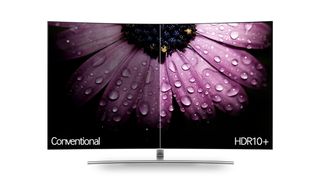Netflix open to supporting HDR10+ standard in the future
But it's not currently on its roadmap

It's beginning to get very crowded in the HDR space. There were already two competing HDR standards in the form of Dolby Vision and HDR10, but earlier this year a brand-new format, HDR10+, emerged.
Amazon Prime Video has already pledged support for the format through its video streaming service, and now Netflix has said that there's a 'possibility' that it will add support for the format in the future.
Speaking to TechRadar, Netflix's Senior Product Manager of its Partner Ecosystem, Richard Smith, said the company would be open to supporting other HDR formats beyond HDR10 and Dolby Vision.
"We do already support HDR10, not the HDR10+ variant, there’s a possibility we’ll support that in the future but it’s not something that’s on our roadmap at the moment," he said, when asked whether the company was open to these other formats.
Scene-by-scene metadata
The main advantage HDR10+ has over HDR10 is that it allows for scene-by-scene HDR mastering using dynamic metadata - similar to what Dolby Vision already offers.
However HDR10+ does not offer the same 12-bit color as is offered by the latter format, instead sticking with the same 10-bit depth as HDR10.
Netflix indicated that it thought an open approach would be much more beneficial to consumers.
Get the best Black Friday deals direct to your inbox, plus news, reviews, and more.
Sign up to be the first to know about unmissable Black Friday deals on top tech, plus get all your favorite TechRadar content.
"Our aim is to not necesserily dictate your choice as a consumer but rather embrace it, and whichever technology you choose to buy we want to give you the best picture we can on that," Smith concluded.
Rather than pre-emptively offer support for a format that's not yet been widely adopted, it instead sounds as though Netflix is waiting for enough people to have compatible televisions before it invests in the format.
With Samsung's 2017 lineup of televisions already offering support for HDR10+, and with Panasonic pledging support for all its 4K Pro, it might be worthwhile for Netflix to support the standard sooner rather than later.
Jon Porter is the ex-Home Technology Writer for TechRadar. He has also previously written for Practical Photoshop, Trusted Reviews, Inside Higher Ed, Al Bawaba, Gizmodo UK, Genetic Literacy Project, Via Satellite, Real Homes and Plant Services Magazine, and you can now find him writing for The Verge.
Most Popular

